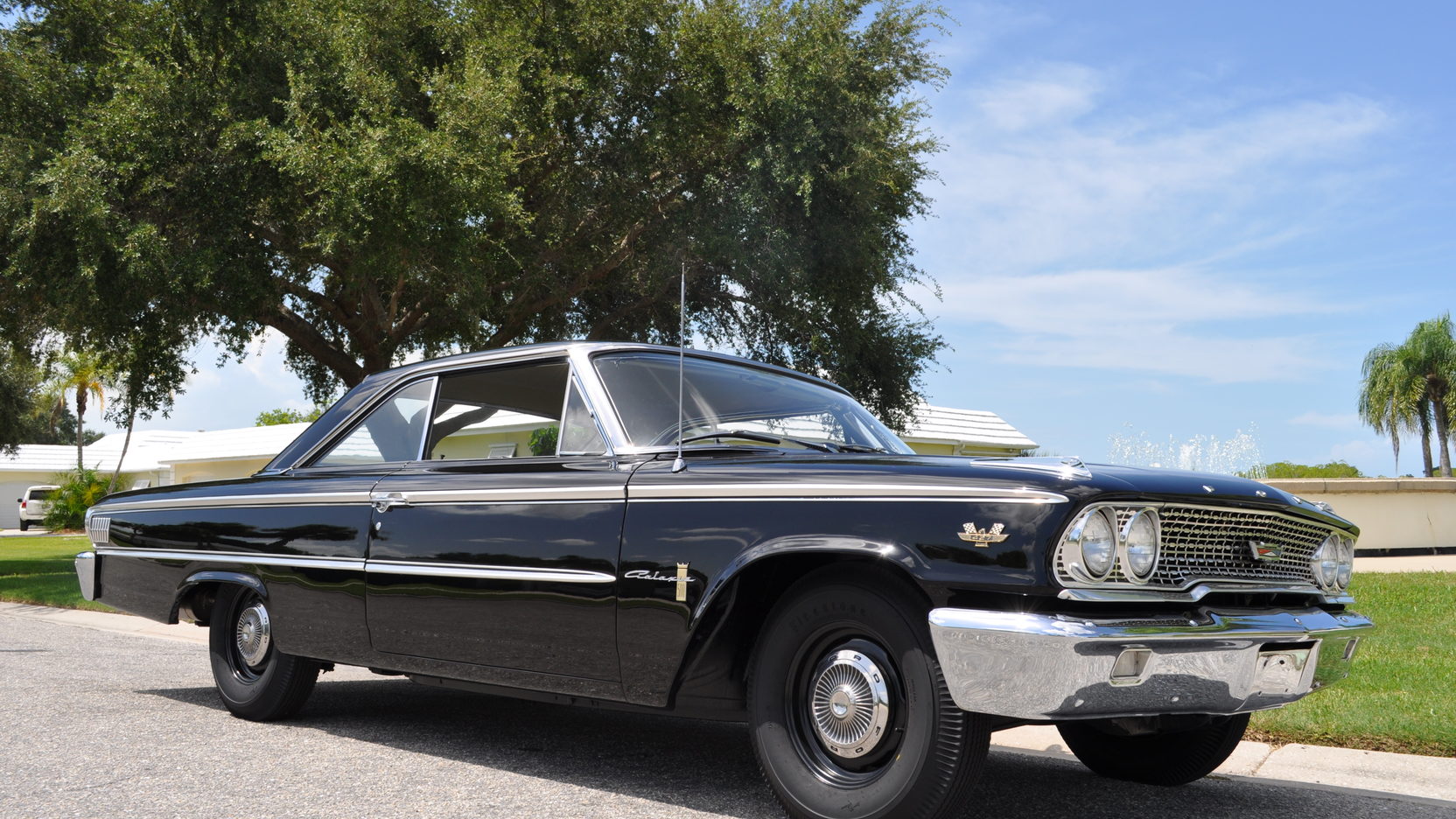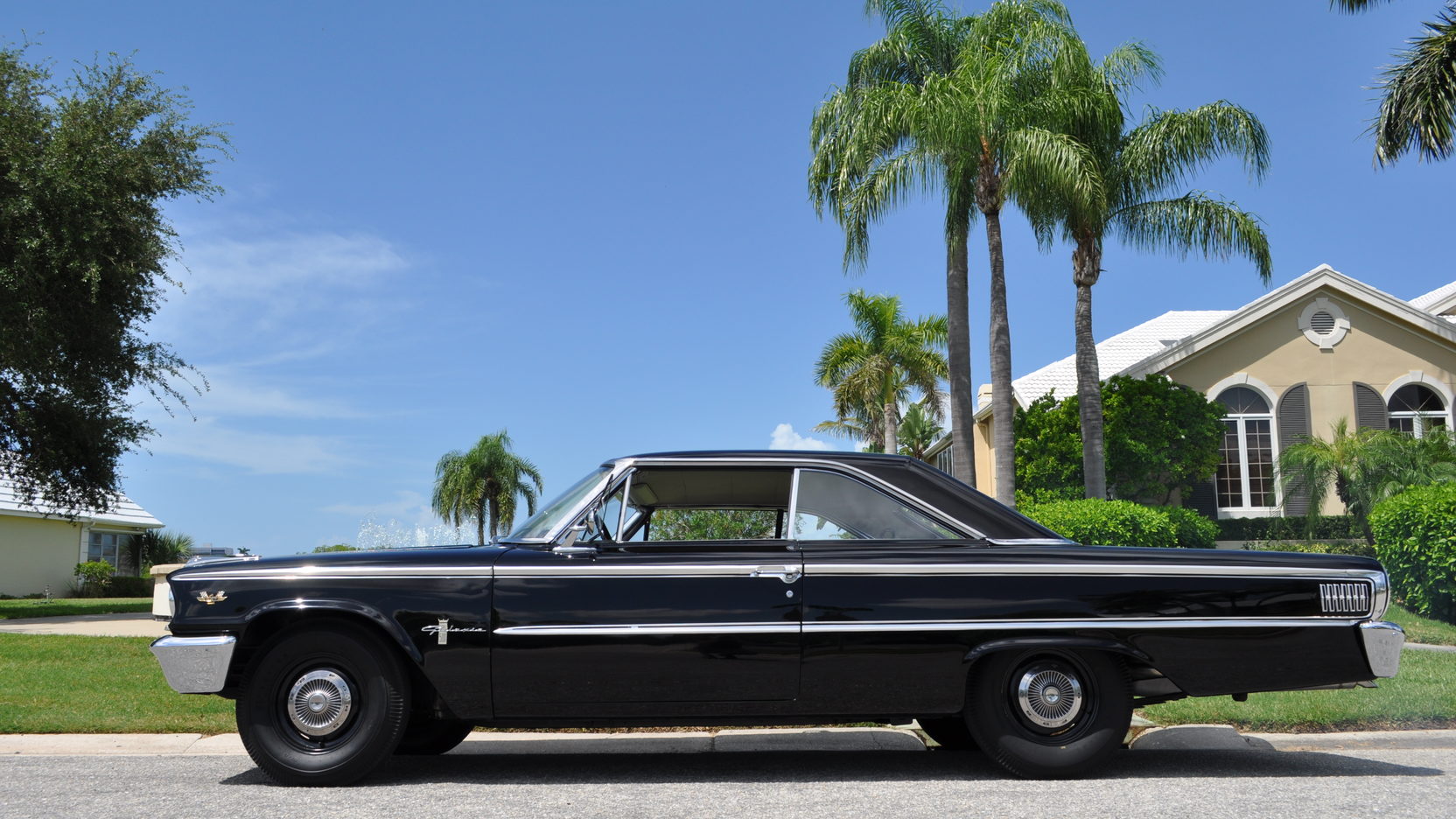The life and death of the stock car
In the beginning, stock actually meant stock. Back in the day, the key to successful moonshine running was to hop up your Plymouth or your Ford V-8, but keep it as stock-looking as possible, so the cops don’t think twice—the original “sleeper” car. But Prohibition ended, and these moonshiners took to racing each other, legally, on dirt. Whenever they could.
It was a run-what-you-brung sort of affair. In 1948, Bill France had an idea for a racing series, and he mandated: the only cars eligible were cars that were currently in production, with at least 500 examples built. With America’s Big Three ramping up production, that was an easy rule to match. The rule that put the stock car in North American Stock Car Auto Racing.
For years, cars drove practically off the dealer floor and onto the beach at Daytona. Even after all the accoutrements of motorsports, even after the roll cages and stripped-down interiors and numbers and hot-rod engines well beyond factory limits, they were still, arguably, cars in production. For manufacturers, that was the point: immediate recognizably with what you could buy, the “race on Sunday, sell on Monday” ethos all but rendered irrelevant today.
The NASCAR transition from amateur showroom-stock racers to big-money professional efforts was foreshadowed in 1955 and 1956 by Carl Kiekhaefer of Mercury Marine. Kiekhaefer essentially took cars from the dealership and tuned every element the rules allowed, including break-in cycles on a dynamometer. His cars dominated both seasons and showed the Big Three manufacturers the marketing value of victory lane.
FIA gets the fame for its homologation rules—creating some wild, thinly-disguised Group B racers—but we forget that NASCAR once implemented those very rules. In the early ‘60s—launching arguably the Golden Age of motorsports at large, much less NASCAR—carmakers developed their production cars into racers, and then back into production cars.
Race on Sunday, sell on Monday
Witness the fastback line of Ford’s 1963 Galaxie Sportsroof, which improved aerodynamics on the track, its 427 engine (actually 425 cubic inches in displacement) the biggest Ford could offer to fit NASCAR’s rules on engine sizes. With the big engine and the aero improvements, Ford won 23 races in the Grand National Series, including total and utter domination at the Daytona 500.



A year later, after a fraught development process, Chrysler rolled out its 750-horsepower 426 Hemi, exactly one cubic inch larger than Ford’s. That year, Chrysler won an incredible 26 races. Drivers were told to keep it under 170 mph during qualifying, to keep the 426’s formidable abilities a secret—until race day. Never mind that it had been tested at 180 miles per hour. Such level of power and domination had yet to be seen in NASCAR.
Bill France started asking questions. NASCAR wanted Chrysler to build 1000 production cars with Hemis for eligibility in the Grand National Series. Chrysler couldn’t fit the 426 into production, so it was banned for 1965—allowing Ford to take the championship.
The proof of the stock car was right here: Chrysler couldn’t translate racing success to the street, and so violated the very essence of stock car racing. So it was banned.
When Chrysler figured things out, it began placing a detuned, lower-compression version of the 426 Hemi into as many models as possible: the 1966 Plymouth Belvedere, Satellite, Dodge Charger, and Coronet all came with the option. Today, you can hit up Scottsdale and bid your grandkids’ college fund on an example while Velocity broadcasts your winning face. That year, Ford sat out, and Chrysler won—again.

By the end of the ‘60s, NASCAR was everything to the remaining Big Two. Ford switched its cars to unibody construction in 1967, and privateers like Banjo Matthews (“the Henry Ford of race cars”) began building their own race-prepped chassis for factory teams like Holman-Moody and Chevrolet.
A changing landscape
The homologation rules remained. In 1969 Ford first developed the homologated Torino Talladega, its subtly-lower “drop snoot” nose good for a five-mph increase in top speed. Not to be outdone, Chrysler hit up the wind tunnel, and rolled out the wild, be-winged, drop-nosed Dodge Charger Daytona and Plymouth Superbird twins. Both made their way into dealers, the dream car of a generation of adolescents who can now, 50 years later, finally afford them. Back then, of course, you just had to know what boxes to check.
In an agonizing twist of fate, these Daytonas and Superbirds were rumored to languish in showrooms for so long that some dealers opted to remove the aero equipment, returning them to regular Chargers and Road Runners. Ford’s even more extreme twins, the Talladega King Cobra and Mercury Super Cyclone Spoiler II, were set to debut for the 1970 season—when NASCAR changed its homologation regulations: one example for every two dealers in America. The smaller size of Plymouth made that rule easy, but the behemoth Ford/Mercury Division would lose money. So, they cancelled it, and pulled out.
20170928203121)
20170928203235)
20170928203229)
NASCAR history is full of small fits of this nature.
The homologation rule lasted well into the late ‘80s, culminating with the Chevrolet Monte Carlo Aerocoupe that a young Dale Earnhardt Sr. cemented his legend with. For that car, officials required a mere 200 cars built, and build them GM did—today they’re worth a lot more than cynics will claim any G-Body short of a GNX has a right to. These Aerocoupes were probably the last tailor-made production cars with genuine NASCAR roots.
Even throughout the ‘80s and into the early ‘90s, these cars had tube-frame chassis and custom race team fabrication, receiving purpose-built bodies-in-white from the manufacturers that still resembled the silhouette of Ford Thunderbirds and Pontiacs and Dodge Miradas—obscure fallen warriors of our recent past.
Tracking the looks
Visually, one can track the changes into unfamiliarity since the Days of Thunder era, in 1990. GM came out with the W-Body in 1988, a front-drive platform that cost $7 billion to develop, sold across every one of its burgeoning divisions. It promoted the designs via—where else?—stock car racing. NASCAR allowed it to emblazon the name ”Lumina” across the front of its own car. By the time Jeff Gordon and his Rainbow Warriors entered in 1992, the cars molded into jellybeans, Thunderbirds resembling Luminas resembling Grand Prixes. Other than some front-end similarities, the transformation was complete.

“Until 2003,” noted NASCAR historian Buz McKim, “the hood, roof, and decklid were still required to be identical to their stock counterparts.”
NASCAR reached its apex of popularity in parallel with these bigger, faster, more uniform cars—though viewership has declined on TV and in attendance in the past two years. And it’s not hard to blame them for striking away from their origins: 800-horsepower V-8s on track don’t necessarily cross over to the front-wheel-drive four-doors in the showroom.
To its credit, the series has acted upon these critiques. In 2007, it introduced the Car of Tomorrow, a uniform spec racer that would bring parity to both the Nationwide and Sprint Cup Series (now Xfinity and Monster Energy, respectively). In 2013, it unveiled its sixth-generation version, which allowed manufacturers to redesign the front ends to resemble their production cars. Now Ford Mustangs, Toyota Supras, and Chevrolet Camaros will continue to battle each other.
If anything, these cars hew more to the early-’90s production-car relationship than the early-2000s jellybeans. NASCAR, once America’s most popular sport bar none in the past ten years, made up for its stock car straying. In a way, that’s how stock car racing endures.




